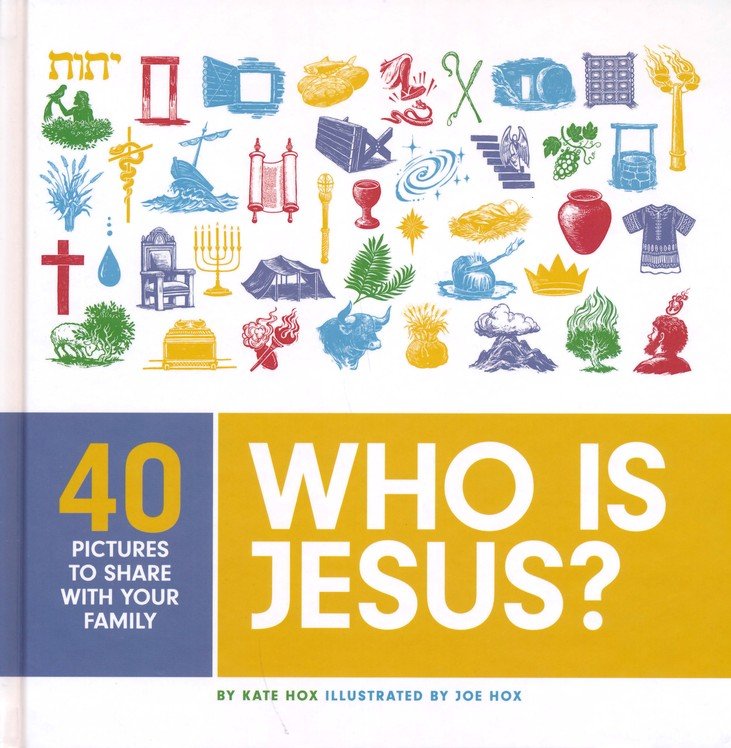It’s hard work teaching children about someone who is no longer around. Whether it’s an ancestor or someone from the ‘olden days’, it can be difficult for a child to really grasp the depths of a person’s life without ever meeting them. Pictures are one tool we rely on—helping our child to see what these people were really like.
When it comes to Jesus, we don’t have the luxury of pulling out an old photo album. We can’t exactly describe Jesus’ hairstyle or eye colour.
And yet, to say we can’t picture Jesus isn’t entirely accurate.
They might be bereft of photos, but the Old and New Testaments are full of pictures of Jesus.
We see Jesus as the Lamb of God and the True Vine; the Good Shepherd and the Bread of Life; the Tabernacle and Triumphant King.
So as we plumb the depths of the Scriptures, there really are a lot of pictures we can share with our children to help them think about the Lord Jesus.
They might be bereft of photos, but the Old and New Testaments are full of pictures of Jesus.
Thinking in Word Pictures
When I use the word ‘pictures’, I’m meaning ‘word pictures.’
What could be better than spending 40 days looking through the Old and New Testaments at descriptions and types of our Lord? Kate Hox has given us a thematic study into the person and work of Jesus in a 40-day devotional, Who is Jesus? She has especially designed this book as a tool in the lead-up to Easter, but our family has used it daily with our two girls (4 and 3 years old) for the last forty days.

Who is Jesus?: Forty Pictures to Share with Your Family
Kate Hox
The Bible is filled with stories and symbols that point us to Jesus as the Savior, the only One who can bring us back to God. God has the best plan, and the biggest and best story. Forty pictures of Jesus—twenty stories from the Old Testament and twenty stories from the New Testament—will guide family devotions and encourage rich conversations about who Jesus is, why he came to earth, and how we can get to know him now. The pictures tell stories about arks, rams caught in a thicket, snakes, sticks, rocks, shepherds, sheep, water, bread, and so much more.
Each picture of Jesus includes a captivating illustration, a key verse to remember, Bible passages to discuss, a family devotion to read, reflection questions, and a song. Families will explore together the rich imagery of the Bible and learn about God’s great love for his people through Jesus Christ his Son.
I love that this book does all the hard work of biblical theology in a thematic way. A lot of kids’ devotionals chronologically follow the stories of the Bible, which is wonderful, but moving through the Old and New Testaments to pick up on particular pictures of Jesus is a nice change.
Each chapter covers a theme by looking at a particular Bible story. The author unpacks the details of the story and then considers relevant cross-references that show us how this theme is a type of Christ.
My girls have particularly enjoyed talking about the tabernacle and the mercy seat, and it has generated some wonderful conversations. At first, explaining that there is ANOTHER ARK apart from Noah’s ark was mind-blowing. After reading the chapter that explained what the mercy seat and the ark of the covenant were for, we were even more blown away by God’s holiness and his mercy to us. Jesus is the way to the Father, the sacrifice of atonement, and the one who reconciles us to God.
For those of us concerned by the use of pictures of the godhead, this book was a delight. When covering Jesus as priest, for example, Hox simply depicts an Old Testament high priest. It’s wonderful to see the fullness and richness of the word pictures used to describe Jesus, rendering the need for actual visual representations totally unnecessary.
It’s wonderful to see the fullness and richness of the word pictures used to describe Jesus, rendering the need for actual visual representations totally unnecessary.
Knowing Leads to Responding
There is a lot to love about the content of this book, but I didn’t always find it easy to read or share with our girls.
My main concern is Hox takes us away from the main point of the passage we are looking at. She does this in two ways.
She will speculate about things the passage doesn’t cover. “Perhaps God was…” This is unfortunate because God has given us so much detail about Jesus, so there is no need to speculate or guess beyond what the passage tells us. While this might be fun or interesting, it risks dragging us away from what the text does say. By failing to stick close to the text, the application is impaired. The author will follow threads that are so far from the main point, that you end up leaving the chapter with some interesting head knowledge, but not much transformative application.
This then comes out in the questions for reflection. Many of the questions were so obscure I needed to do my own research beyond the passages we read in order to answer them.
In a children’s devotional like this, it would be better if the questions and applications stuck more closely to the passage offered. We want our children, not just to learn new and wonderful things about our Lord Jesus, but to discover they can understand and apply what the Bible says about him for themselves.
We want our children, not just to learn new and wonderful things about our Lord Jesus, but to discover they can understand and apply what the Bible says about him for themselves.
How to Get the Most out of this Book
Nevertheless, I really liked the pictures of Jesus that Hox chose to explore. There are many ways you can use this book in your toolbox of resources to teach your children about our wonderful Saviour.
This would be a great resource to use for a term in youth group. Why not pick ten themes and create some studies based around the passages shared? You could add your own application questions to really help the teenagers think about their lives in response to Christ.
If I was to start this book over, I’d ditch the reflection questions and use my own ideas to create discussion from the passage. For example, when looking at Jesus the triumphant king, I’d ignore the question about the donkey’s hair looking like a cross. Instead: Why it is good that Jesus is our king? How does he defend us? Why should we give him our loyalty? If Jesus conquers our enemies, what does that mean we should do with our enemies?
Who is Jesus? fails to ask helpful questions, but might still be a fantastic resource if we think more intentionally about how to respond to the pictures of Jesus it presents.
Our children can picture Jesus without looking at a photograph. But it’s only by asking the right questions that we can respond to these pictures of Jesus as we ought—in obedience and worship.















